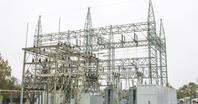Nateghi team develops new climate change paradigm
Nateghi, an assistant professor in Purdue University’s School of Industrial Engineering and Division of Environmental and Ecological Engineering, and Sayanti Mukherjee, a visiting scholar with the School of Industrial Engineering and a postdoctoral research associate in the Division of Construction Engineering and Management, proposed a multi-paradigm framework to help extend existing energy-economy models to be able to account for climate change. They used the state of Indiana as a case study. Nateghi and Mukherjee co-authored "A multi-paradigm framework to assess the impacts of climate change on end-use energy demand" describing the research, published online November 20 in the journal PloS One.
The study compared the future projections to historical energy consumption for cooling, heating and water heating for the commercial and residential sectors from 1981–2013. It looked at "statistically representative" average residential homes and commercial buildings in Indiana, so the effects of climate change on residential and commercial energy consumption ranged above and below these estimated projections, according to Nateghi.
"It should be noted that while our proposed framework accounts for demand variation due to climate change, it does not account for potentially higher intensity and frequency of climatic extremes such as ice storms and tornados under climate change," Nateghi said. "Future work is needed to extend our paradigm to also account for such weather and climate extremes that could become much more intense and frequent under climate change, and have significant impacts on our energy sector in the future."
The research was funded in part by the National Science Foundation and the Purdue Climate Change Research Center.
ABSTRACT
"A Multi-Paradigm Framework to Assess the Impacts of Climate Change on End-Use Energy Demand"
Projecting the long-term trends in energy demand is an increasingly complex endeavor due to the uncertain emerging changes in factors such as climate and policy. The existing energy-economy paradigms used to characterize the long-term trends in the energy sector do not adequately account for climate variability and change. In this paper, we propose a multi-paradigm framework for estimating the climate sensitivity of end-use energy demand that can easily be integrated with the existing energy-economy models. To illustrate the applicability of our proposed framework, we used the energy demand and climate data in the state of Indiana to train a Bayesian predictive model. We then leveraged the end-use demand trends as well as downscaled future climate scenarios to generate probabilistic estimates of the future end-use demand for space cooling, space heating and water heating, at the individual household and building level, in the residential and commercial sectors. Our results indicated that the residential load is much more sensitive to climate variability and change than the commercial load. Moreover, since the largest fraction of the residential energy demand in Indiana is attributed to heating, future warming scenarios could lead to reduced end-use demand due to lower space heating and water heating needs. In the commercial sector, the overall energy demand is expected to increase under the future warming scenarios. This is because the increased cooling load during hotter summer months will likely outpace the reduced heating load during the more temperate winter months.
Read more: Probable Indiana energy consumption increase

